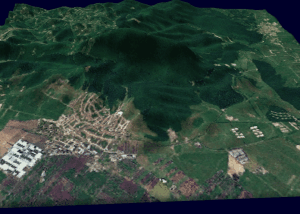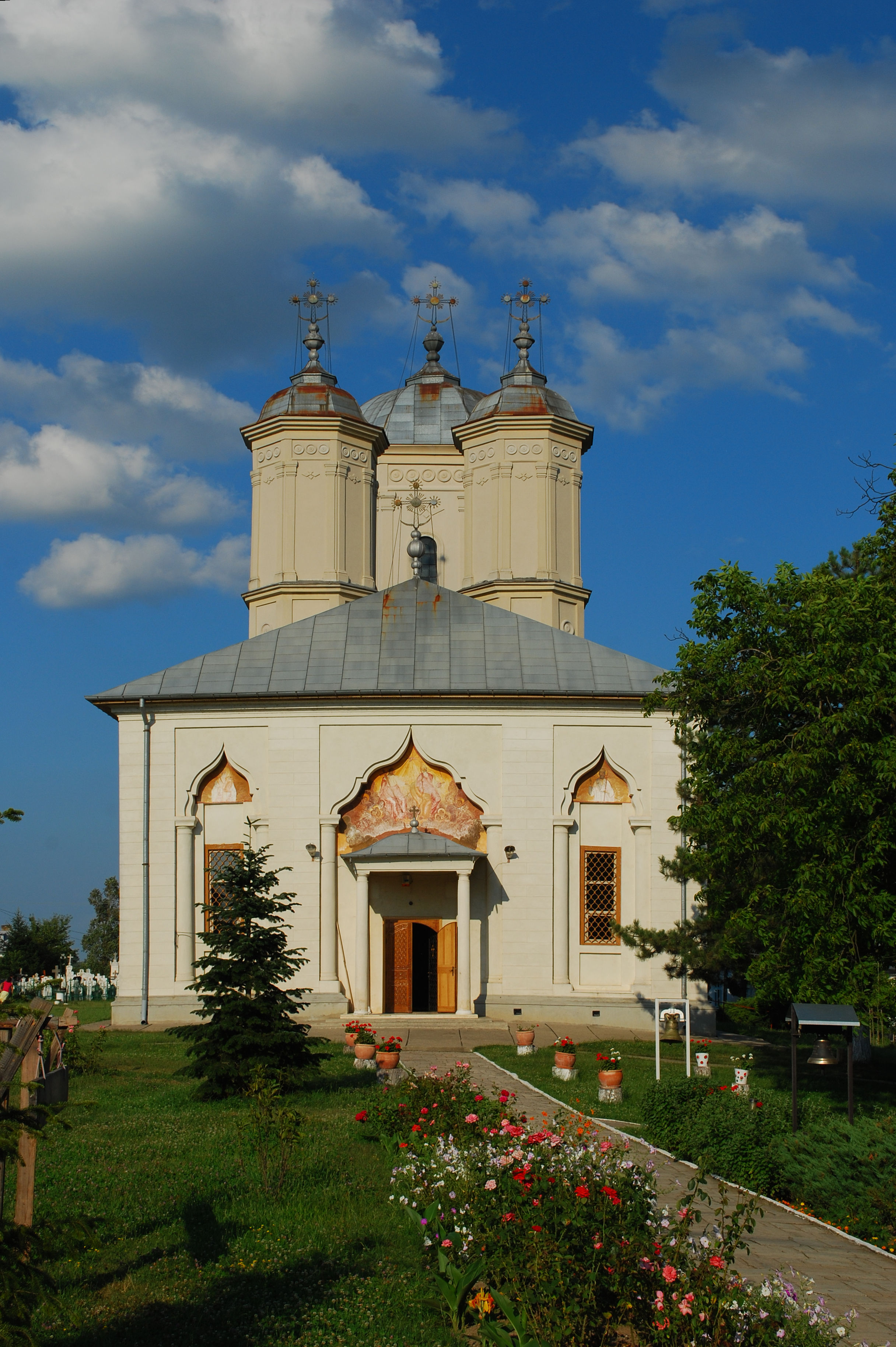|
List Of Senior Securitate Officers
This is a list of senior Securitate officers. The ''General Direction for the Security of the People'', better known by its Romanian abbreviation, ''Securitate'', was officially founded on August 30, 1948 by Decree 221/30. However, it had effectively existed since August 1944, when communists began to infiltrate the Ministry of Internal Affairs on a large scale, with help from SMERSH, an NKVD unit charged with demolishing existing intelligence agencies and replacing them with Soviet-style bodies in the Soviet-occupied countries of Eastern Europe. From its inception, the Securitate engaged in a terror campaign against "class enemies". The campaign was led from the position of Minister of Interior by Teohari Georgescu in 1948–1952, and Alexandru Drăghici in 1952–1965, seconded in the position of Deputy Interior Minister (until 1960) and Chief of Securitate by Gheorghe Pintilie. Although the largest number of victims was registered between 1948 and 1952, the campaign continued unt ... [...More Info...] [...Related Items...] OR: [Wikipedia] [Google] [Baidu] |
Securitate
The Securitate (, Romanian for ''security'') was the popular term for the Departamentul Securității Statului (Department of State Security), the secret police agency of the Socialist Republic of Romania. Previously, before the communist regime, Romanian secret police was called Siguranța Statului. It was founded on 30 August 1948, with help and direction from the Soviet MGB. Following the overthrow of Nicolae Ceaușescu in 1989, the new authorities assigned the various intelligence tasks of the DSS to new institutions. The Securitate was, in proportion to Romania's population, one of the largest secret police forces in the Eastern bloc. The first budget of the Securitate in 1948 stipulated a number of 4,641 positions, of which 3,549 were filled by February 1949: 64% were workers, 4% peasants, 28% clerks, 2% persons of unspecified origin, and 2% intellectuals. By 1951, the Securitate's staff had increased fivefold, while in January 1956, the Securitate had 25,468 employees.Cr ... [...More Info...] [...Related Items...] OR: [Wikipedia] [Google] [Baidu] |
Adevărul
''Adevărul'' (; meaning "The Truth", formerly spelled ''Adevĕrul'') is a Romanian daily newspaper, based in Bucharest. Founded in Iași, in 1871, and reestablished in 1888, in Bucharest, it was the main left-wing press venue to be published during the Romanian Kingdom's existence, adopting an independent pro- democratic position, advocating land reform, and demanding universal suffrage. Under its successive editors Alexandru Beldiman and Constantin Mille, it became noted for its virulent criticism of King Carol I. This stance developed into a republican and socialist agenda, which made ''Adevărul'' clash with the Kingdom's authorities on several occasions. As innovative publications which set up several local and international records during the early 20th century, ''Adevărul'' and its sister daily ''Dimineața'' competed for the top position with the right-wing ''Universul'' before and throughout the interwar period. In 1920, ''Adevărul'' also began publishing its prestigious ... [...More Info...] [...Related Items...] OR: [Wikipedia] [Google] [Baidu] |
Feldioara
Feldioara (german: Marienburg, ; hu, Földvár or ''Barcaföldvár'') is a commune in Brașov County, Transylvania, Romania, about 15 kilometres from the city of Brașov. It is composed of three villages: Colonia Reconstrucția (''Bohntelep''), Feldioara and Rotbav (''Rothbach''; ''Szászveresmart''). The commune is located in the east-central part of the county, in the northern reaches of the Burzenland. It is situated on the left bank of the Olt River, which mostly follows the border with Covasna County. The Bârsa River discharges into the Olt near Feldioara. At the 2011 census, 88.8% of inhabitants were Romanians, 6.9% Hungarians and 3.5% Roma. Feldioara has a medieval fortress long believed to have been built by the Teutonic Knights. However, more recent studies show that the Fortress in Feldioara was actually constructed by the local community. The name of the village comes from the Hungarian word ''földvár'', which means "the clay fortress". The ruins of the fortre ... [...More Info...] [...Related Items...] OR: [Wikipedia] [Google] [Baidu] |
Codlea
Codlea (; german: Zeiden; Transylvanian Saxon dialect: ''Zäöeden''; hu, Feketehalom) is a municipiu, city in Brașov County, Transylvania, Romania. History During the 13th century, the Teutonic Order built a fortress known as ''Schwarzburg'' ("black castle") near the "Măgura Codlei". The castle's name was first noted in 1265 and was rebuilt for the last time in 1432 by the craftsmen's guild that worked in the town. The city of Codlea is believed to have been also founded by Transylvanian Saxons, Germans. The fortified church in the city is the largest in the Burzenland historic region. Codlea was well known for its flowers and was called the city of flowers. Name The Romanian language, Romanian name "Codlea" could be a derivation from the Latin *codella, diminutive from Latin coda ‘edge, rearward’ or it could be a derivation from the Slavic languages, Slavic ''cotal'' ("kettle"), as the ''Măgura Codlei'' ("kettle hill") looks like a kettle. In Romanian, Măgura means 'bi ... [...More Info...] [...Related Items...] OR: [Wikipedia] [Google] [Baidu] |
Zărnești
Zărnești (; german: link=no, Molkendorf, Zernescht; hu, Zernest) is a town in Brașov County, Transylvania, Romania, with a population of 21,681. It administers one village, Tohanu Nou (''Neu-Tohan''; ''Újtohán''). It is located near the Piatra Craiului Mountains, which are part of the Southern Carpathians mountains range. Its close proximity to the Piatra Craiului make it a common start point for tourists and hikers wishing to explore "The Piatra Craiului National Park". History During the Roman period, soldiers of the Legio XIII Gemina were buried in the territory that is modern day Zărnești. It is first mentioned in the year 1373 under the name Zârna and also referred to as "possessio regalis Zerne" in 1395. Other names that appeared after 1437 are Zerna, Villa Czerne, and Zernyest. Modern day Zărnești developed in the same location as the historic one. The commune of Tohan, which is now part of the town, was first mentioned in the year 1294, and remains among t ... [...More Info...] [...Related Items...] OR: [Wikipedia] [Google] [Baidu] |
Iosif Kalbușek
Iosif may refer to: People *Iosif Amusin, Soviet historian *Iosif Anisim, Romanian sprint canoer *Iosif Blaga, Romanian literary theorist and politician *Iosif Bobulescu, Romanian bishop *Iosif Capotă, Romanian anti-communist resistance fighter *Iosif Iser, Romanian painter and graphic artist *Iosif Mendelssohn, Romanian chess master *Iosif Pogrebyssky, Ukrainian chess master *Iosif Rotariu, Romanian footballer *Iosif Shklovsky, Soviet astronomer and astrophysicist *Iosif Vitebskiy (born 1938), Soviet Ukrainian Olympic medalist and world champion fencer and fencing coach *Iosif Vigu, Romanian footballer and manager *Iosif Vulcan, Austro-Hungarian Romanian magazine editor and cultural figure *Dan Iosif, Romanian politician *Ștefan Octavian Iosif Ștefan Octavian Iosif (; 11 October 1875 – 22 June 1913) was an Austro-Hungarian-born Romanian poet and translator. Life Born in Brașov, Transylvania (part of Austria-Hungary at the time), he studied in his native town and in S ... [...More Info...] [...Related Items...] OR: [Wikipedia] [Google] [Baidu] |
Brașov
Brașov (, , ; german: Kronstadt; hu, Brassó; la, Corona; Transylvanian Saxon: ''Kruhnen'') is a city in Transylvania, Romania and the administrative centre of Brașov County. According to the latest Romanian census (2011), Brașov has a population of 253,200 making it the 7th most populous city in Romania. The metropolitan area is home to 382,896 residents. Brașov is located in the central part of the country, about north of Bucharest and from the Black Sea. It is surrounded by the Southern Carpathians and is part of the historical region of Transylvania. Historically, the city was the center of the Burzenland, once dominated by the Transylvanian Saxons, and a significant commercial hub on the trade roads between Austria (then Archduchy of Austria, within the Habsburg monarchy, and subsequently Austrian Empire) and Turkey (then Ottoman Empire). It is also where the national anthem of Romania was first sung. Names Brassovia, Brassó, Brașov, etc. According to Dragoș Mo ... [...More Info...] [...Related Items...] OR: [Wikipedia] [Google] [Baidu] |
Domnești, Ilfov
Domnești is a commune in the southwestern part of Ilfov County, Muntenia, Romania. Its name is derived from "Domn" (Lord, referring to the ruler of Wallachia Wallachia or Walachia (; ro, Țara Românească, lit=The Romanian Land' or 'The Romanian Country, ; archaic: ', Romanian Cyrillic alphabet: ) is a historical and geographical region of Romania. It is situated north of the Lower Danube and s ...) and suffix "-ești". It is composed of two villages, Domnești and Țegheș. References Communes in Ilfov County Localities in Muntenia {{Ilfov-geo-stub ... [...More Info...] [...Related Items...] OR: [Wikipedia] [Google] [Baidu] |
Buftea
Buftea () is a town in Ilfov County, Muntenia, Romania, located north-west of Bucharest. One village, Buciumeni, is administered by the town. The film studios MediaPro Pictures and the Buftea Palace of the Știrbei family are located in Buftea. It is the hometown of Olympic bronze medalist and two-time European Champion rower Daniela Druncea. Natives * Mihai Aioani * Marius Bâtfoi * Elisa Brătianu * Alina Eremia * Daniela Druncea * Nicolae Grigore * Constantin Lupulescu * Barbu Știrbey Prince Barbu Alexandru Știrbey (; 4 November 1872 – 24 March 1946) was 30th Prime Minister of the Kingdom of Romania in 1927. He was the son of Prince Alexandru Știrbey and his wife Princess Maria Ghika-Comănești, and grandson of another ... References Towns in Romania Populated places in Ilfov County Localities in Muntenia {{Ilfov-geo-stub ... [...More Info...] [...Related Items...] OR: [Wikipedia] [Google] [Baidu] |
Brănești, Ilfov
Brănești is a commune in the far east of Ilfov County, Muntenia, Romania. Its name is derived from ''Bran'', a Romanian name, and the suffix -ești. It is composed of four villages: Brănești, Islaz, Pasărea, and Vadu Anei. The commune is located east of downtown Bucharest, on the border with Călărași County. It lies on the left bank of the river Pasărea, which separates it from the town of Pantelimon and the commune Cernica to the west. Brănești is traversed by the A2 motorway, which connects Bucharest to Constanța on the Black Sea coast, and by national road DN3, which connects Bucharest to Călărași and on to Constanța. County road DJ100 goes south towards Fundeni and northwest towards Găneasa, Afumați, Ștefăneștii de Jos, Tunari, and Otopeni. The commune also has several train stations that serve the CFR Line 800, which runs from Bucharest to the Black Sea coast. , dating from 1813, is located in Pasărea village. The Cătălin Hîldan Stadium ... [...More Info...] [...Related Items...] OR: [Wikipedia] [Google] [Baidu] |
Oltenița
Oltenița () is a city in Călărași County, Muntenia, Romania, on the left bank of the river Argeș, where its waters flow into the Danube. Geography The city is located in the southwestern part of the county; it stands across the Danube from the Bulgarian city of Tutrakan. The national road DN4 connects Oltenița to Bucharest, to the northwest. Road connects it to the county seat, Călărași, to the east, and road connects it to Giurgiu, to the west. The Oltenița train station, located near the intersection of those three roads, serves the CFR Line 801, which connects the city to Bucharest (Titan Sud and Obor stations). History Excavations on Gumelnița hill near the city revealed a Neolithic settlement dating from the 4th millennium BC. The first mention of a town bearing the name Oltenița appears in 1515 during the reign of Neagoe Basarab. In November 1853, at the start of the Crimean War the Ottoman forces attempted to cross the river at this point and ... [...More Info...] [...Related Items...] OR: [Wikipedia] [Google] [Baidu] |
.png)




